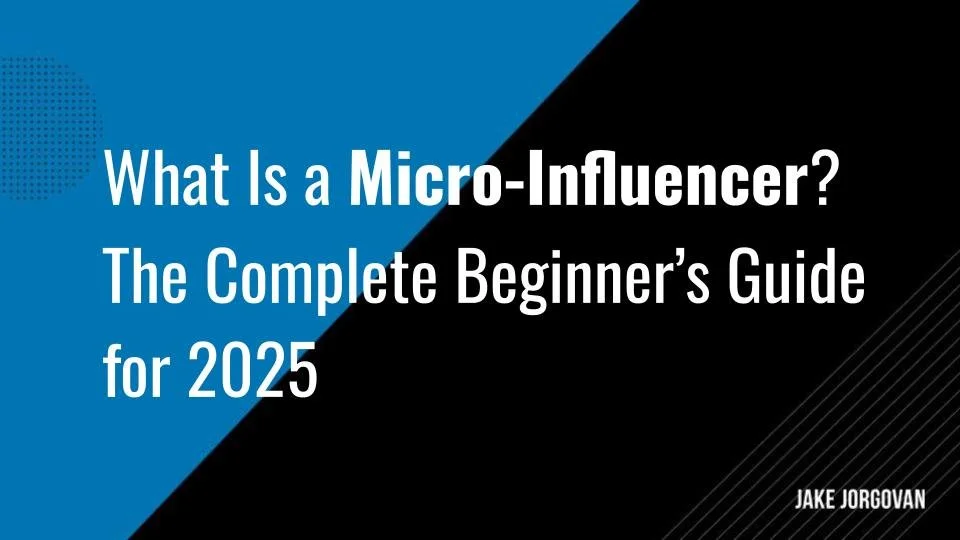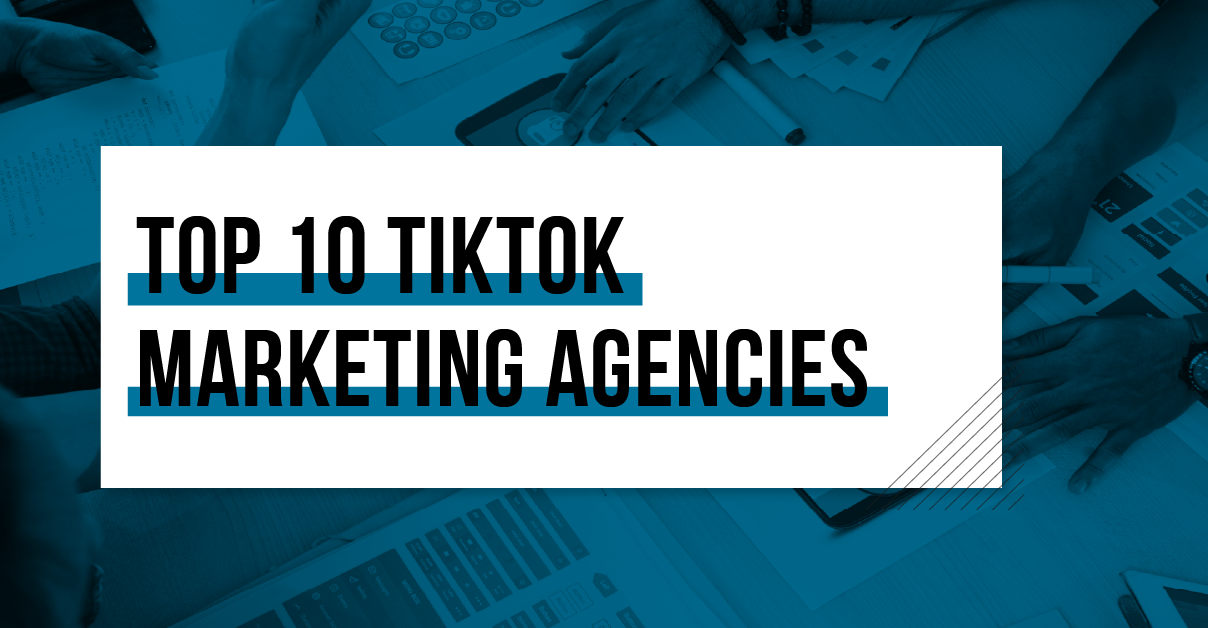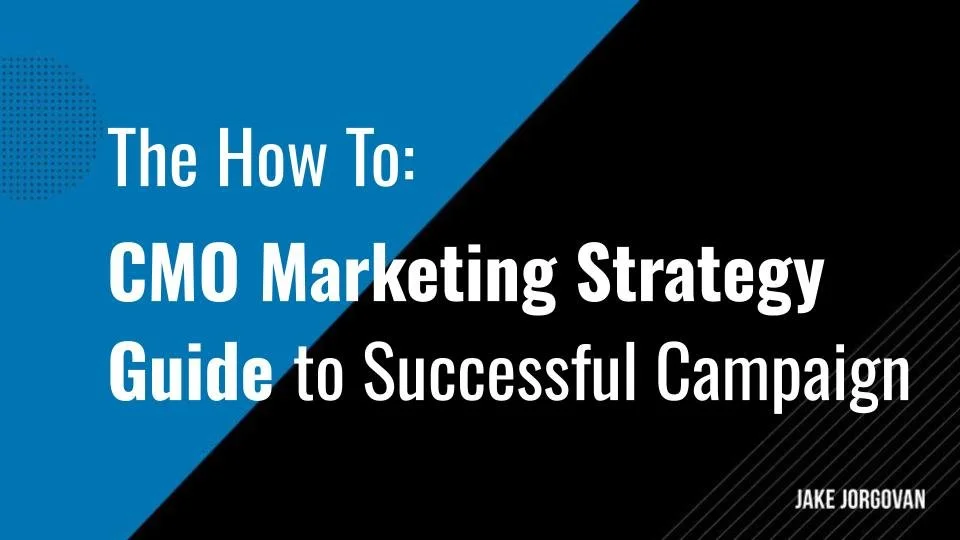The Role of the Chief Marketing Officer (CMO) in Business Success in 2025
CMOs hold a critical position in shaping the success and image of their organizations. But what does the CMO do? Their responsibilities, traditionally encompassing advertising, market research, and customer service, have expanded to include digital strategy, data analytics, and customer engagement in the online realm.
As we step into 2025, the role of the CMO is undergoing a major shift.
No longer confined to traditional marketing tactics, modern CMOs are at the forefront of technological adoption, becoming key players in business strategy and contributing to decisions beyond the marketing department.
This article dives into the evolving role of the Chief Marketing Officer in 2025 and beyond.
We will explore how changes in technology, consumer behavior, and business models are reshaping the CMO’s responsibilities and strategies.
Join us as we analyze the new challenges and opportunities that lie ahead for Chief Marketing Officers.
What is the purpose of a CMO in 2025?
First, let’s look at some of the main factors impacting the changing role of the CMO. We’ll explore each in more detail in the rest of the article.
The role of a chief marketing officer in 2025 is rapidly evolving to meet the demands of a more connected, data-driven, and customer-centric world. Today’s CMOs are tasked with integrating advanced technologies like AI, machine learning, and big data analytics, which can increase marketing ROI by up to 30%, according to a recent McKinsey report. These technologies are no longer optional—they’re essential for crafting strategies and making decisions that drive growth.
CMOs are also at the forefront of digital transformation within their companies, ensuring that their marketing strategies keep pace with evolving digital channels and platforms. In fact, over 80% of companies expect their CMOs to lead digital initiatives, positioning them as key players in aligning tech with business goals.
A major shift has been the focus on customer experience. Modern CMOs are moving away from traditional, one-way marketing to create holistic, customer-focused experiences across all touchpoints. Research by PwC found that 73% of consumers say a good experience is a key factor in their brand loyalty, underscoring the importance of this shift.
Data privacy and ethics are also critical, as CMOs manage compliance with complex data regulations like GDPR and CCPA, which are shaping consumer expectations on how their data is used. Navigating these ethical contexts is essential for maintaining trust—something that nearly 74% of customers say impacts their purchasing decisions.
Another growing responsibility is sustainability and social responsibility. As 65% of global consumers look for brands that support sustainable practices, CMOs are incorporating these values into their marketing strategies to meet consumer expectations for ethical and eco-friendly products. This isn’t just good PR; it’s essential for connecting with today’s socially conscious audience.
Modern CMOs must also prioritize cross-functional collaboration, working closely with IT, sales, and product teams to align strategies and share insights. This collaborative approach ensures that marketing efforts are cohesive and that each department contributes to unified goals.
Finally, content creation and storytelling remain pivotal. Consumers value brands that feel authentic and engaging, with 92% of consumers saying they want ads that feel like stories. CMOs are increasingly focused on creating content that resonates on a deeper level, building lasting brand loyalty through genuine, story-driven marketing.
In 2024, CMOs are more than just marketers—they’re strategic visionaries who drive innovation, uphold customer trust, and align their brand’s mission with the values of a new generation of consumers.
Let’s review all these things below:
1. Integration of Advanced Technologies
The integration of advanced technologies like AI, machine learning, and big data analytics into the role of a Chief Marketing Officer (CMO) is a response to the rapidly evolving digital landscape. The proliferation of data and the advancement of technology tools have provided unprecedented insights into consumer behavior and preferences.
Impact on the Role of a CMO
The role of a CMO is being transformed by advanced technologies that drive smarter, faster marketing strategies. Big data analytics offers deep insights into customer behaviors, helping CMOs understand their audience more accurately. Predictive AI allows them to anticipate market trends, while machine learning enables personalization at scale, delivering tailored messages to individual customers. AI-driven automation reduces manual tasks, improving efficiency in marketing operations.
Through these tools, CMOs can create more engaging digital experiences and respond to shifts in real-time, enhancing their ability to make quick, data-informed decisions. Additionally, machine learning algorithms optimize content delivery based on user engagement, ensuring the right messages reach the right people at the right time. In short, today’s CMOs are empowered by technology to make better, faster decisions and to connect with customers on a more personal level.
Real-World Example Of CMO Adaptation Marketing Efforts
A good example here is Netflix’s use of data analytics and AI. Netflix’s CMO uses these technologies to understand viewer preferences and viewing patterns. This insight drives personalized content recommendations for each subscriber, significantly enhancing user experience and engagement.
Additionally, these technologies inform Netflix’s decisions on which original content to produce based on predictive models of viewer preferences. This approach improves customer satisfaction and ensures the company’s investment in content creation stretches further.
2. Digital Transformation Leadership: The Future of CMO Roles
The shift of the CMO towards leading digital transformation is driven by the increasing importance of digital channels in consumer engagement and sales.
As customers spend more time online and demand more digital experiences, businesses must adapt to stay relevant. The CMO, with a deep understanding of consumer behavior and market trends, is well-positioned to spearhead this transformation, ensuring that digital initiatives align with broader marketing and business objectives.
Impact on the Role of a Chief Marketing Officer
Today’s CMOs play a crucial role in strategic digital planning, aligning comprehensive digital marketing efforts with overall business goals. They oversee cross-channel marketing, ensuring consistent messaging across platforms, and manage customer data to boost engagement while complying with data privacy laws.
As famous American author John Naisbitt says, though:
“Strategic planning is worthless – unless there is first a strategic vision.” (John Naisbitt)
That brings us to a new role of CMOs:
They should also be driving innovation in digital offerings, developing new products and services to meet evolving consumer demands. Collaboration with IT teams is essential, as they work together to integrate marketing with digital technologies seamlessly.
A key focus is on enhancing the digital customer experience, from optimizing website design to improving mobile and online services. Finally, CMOs are responsible for online brand management, maintaining and strengthening the brand’s digital presence across social media, online reviews, and digital PR. In short, the modern CMO is at the center of a company’s digital evolution, shaping every aspect of its online identity and customer engagement.
Real-World Example
Nike’s digital transformation under Nicole Hubbard Graham, its CMO leadership, exemplifies this change. Nike shifted its focus to direct-to-consumer digital channels, augmenting its online presence and launching apps like Nike Training Club and Nike Running Club.
These initiatives provided personalized digital experiences to customers, significantly boosting online sales and customer engagement. The CMO’s role was pivotal in this transformation, showcasing how leading digital initiatives can drive significant business growth and brand evolution in a digital-centric market.
3. Why Marketing Executives Need to Focus on Customer Experience
“86% of buyers are willing to pay more for a great customer experience.” which means that marketing efforts are shifting towards a better service for their clients.
In 2024, customers usually pay more if that means a better service.
The Role of Marketing Leaders in Customer Experience
The shift towards a focus on customer experience (CX) in the role of the CMO is a response to the growing recognition that customer satisfaction and loyalty are key drivers of business success.
Today, products and services are often similar across competitors, making the customer experience a crucial differentiator. As the executives are most in tune with customer needs and preferences, CMOs increasingly take the lead in ensuring a cohesive and positive customer journey.
Impact on the Role of a CMO
Here’s how to create a great customer experience.
Customer journey mapping is essential to identify key touchpoints, ensuring a smooth, positive experience at every stage. Brand experience integration is equally important, as it ensures the brand’s values and messaging are consistently represented in all interactions.
CMOs should leverage customer feedback and insights to refine marketing strategies and enhance the overall experience. Collaboration across departments—like sales, customer service, and product development—helps maintain a unified approach to customer engagement.
Personalizing interactions using data and analytics adds a tailored touch, increasing customer satisfaction and loyalty. Additionally, CMOs can enhance engagement by innovating customer touchpoints through channels like social media, mobile apps, and virtual experiences. Finally, setting and tracking customer experience metrics provides a way to monitor satisfaction and loyalty, ensuring continuous improvement and alignment with customer expectations.
Real-World Example of Good CX
In loyalty statistics made in 2024, iPhone users were found to be 18% more loyal to the Apple brand than Android users. Just last year, Apple achieved an 81% customer satisfaction rating, which is higher than that of any other smartphone company.
This is no surprise, given that Apple’s CMO, Greg Joswiak, has been instrumental in creating a seamless and unique experience for customers, from the design and functionality of products to the customer service in Apple Stores.
The focus on customer experience is evident in the intuitiveness of their product interfaces, the layout and service in their retail stores, and their highly personalized marketing communications. This commitment to customer experience has played a key role in establishing Apple as a leader in customer satisfaction and brand loyalty in the tech industry.
4. Data Privacy and Ethics Management
Ethical concerns are important for CMOs.
The increasing focus on data privacy and ethics in the Chief Marketing Officer role is primarily driven by growing public concern over data misuse and the implementation of stringent data protection laws globally, like GDPR and CCPA.
Consumers are more aware and concerned about how their personal data is collected, used, and protected. Consequently, businesses must prioritize data ethics to maintain consumer trust and comply with legal standards. The CMO is at the forefront of data collection through marketing activities, so they are naturally evolving to become a steward of ethical data practices.
Impact on the Role of a CMO In Ethnic Data Collection
Data privacy compliance: Ensuring all marketing practices comply with international, national, and regional data privacy laws
Ethical data use: Establishing guidelines for ethical data use that respect customer privacy and preferences
Consumer trust building: Implementing transparent data practices to build and maintain consumer trust
Training and awareness: Educating the marketing team and relevant stakeholders about the importance of data privacy and ethical practices
Customer communication: Communicating clearly with customers about how their data is used and the measures taken to protect it
Privacy-centric marketing strategies: Developing marketing strategies that are effective while respecting customer privacy and ethical considerations
Crisis management: Being prepared to manage and respond to any data privacy breaches or ethical issues that may arise
Real-World Example
Unilever has publicly committed to responsible data practices, committing to transparency and consumer trust. They have implemented strict data collection and use guidelines, ensuring compliance with global data protection regulations.
Here’s what their website suggests:
This commitment is reflected in their marketing campaigns, overseen by their CMO, emphasizing respect for consumer privacy and ethical use of data. Unilever’s approach has enhanced its brand reputation as a trustworthy and ethical company.
5. Sustainability and Social Responsibility
The shift towards sustainability and social responsibility in the CMO’s role is driven by an increasing consumer demand for ethical and environmentally friendly practices. In today’s market, a brand’s stance on social and environmental issues can significantly influence consumer choices.
In fact, statistics have shown that 77% of consumers are motivated to purchase from socially responsible companies.
People are more inclined to support businesses committed to positive social and environmental impact. As the leaders responsible for brand image and customer engagement, CMOs adapt to this paradigm shift by integrating sustainability and social responsibility into their marketing strategies.
Impact on the Role of a CMO
CMOS should lean towards sustainable branding. This means developing and promoting a brand image that reflects commitment to sustainability and social responsibility
Their ethical marketing practices also matter. The point is to not just sell a product but also convey the company’s ethical values and initiatives. Similarly, educating consumers about the company’s sustainable practices and the environmental or social benefits of their products or services is equally important.
Forming partnerships with environmentally and socially responsible organizations to enhance brand credibility is another good step. Influencing the design and development of products and packaging to be more sustainable can also be a good result of these partnerships.
CMOs can also launch marketing campaigns that highlight the company’s sustainability efforts and encourage environmentally friendly consumer behaviors.
Of course, they should be implementing metrics to measure the effectiveness of sustainable marketing practices and regularly reporting on progress
Real-World Example
Patagonia’s marketing approach, led by its CMO, showcases the beginning of this shift. The company’s marketing strategy focuses heavily on its commitment to environmental sustainability. This is evident in campaigns encouraging the repair of clothing instead of buying new clothing, initiatives to reduce carbon footprint, and the use of sustainable materials in their products.
Patagonia’s 2011 “Don’t Buy This Jacket” campaign was a true pioneer in showing how CMOs should embrace social responsibility. The campaign, which discouraged excessive consumption, is a notable example of how the company’s marketing aligns with its core values of environmental responsibility. This directly reflects the evolving role of the CMO in embracing and promoting sustainability, a shift that started years ago but is becoming more prominent today.
6. Cross-functional Collaboration For A Better Chief Marketing Officer Role
In the digital age, marketing strategies are deeply intertwined with other aspects of the business, such as technology, product development, sales, and customer service. Effective marketing now requires a holistic approach that aligns with the company’s overall strategy and goals.
The CMO has a comprehensive understanding of market trends and consumer behavior and is uniquely positioned to collaborate across departments. This collaboration ensures that marketing strategies are integrated and support broader business objectives.
Impact on the Role of a CMO
The role of a CMO is increasingly strategic, focusing on aligning marketing with the overall business strategy to ensure consistent objectives across departments. This integrated approach is crucial as 70% of CEOs now expect CMOs to directly contribute to growth. A key aspect of the role involves collaborating with IT and technology teams to leverage digital tools and data analytics, which enhance marketing effectiveness and streamline digital platform development.
CMOs also play a significant part in product development, using consumer insights to influence design and functionality so that new products meet market demand while aligning with brand strategies. While this collaboration speeds up time-to-market for new offerings, most companies do not practice it. Close alignment with the sales department is essential as well, ensuring that marketing and sales strategies create a seamless customer journey from awareness to purchase.
Furthermore, CMOs are tasked with integrating customer service insights into marketing to reflect real-time customer feedback, fostering a customer-centric approach. They also focus on internal communication and education, building a unified understanding of marketing goals across departments.
Finally, data sharing and analysis are central to the CMO role, enabling comprehensive insights and data-informed decisions. On the other hand, 67% of CMOs say they are overwhelmed by it. That’s why you should implement the right systems in your firm.
Real-World Example
Apple’s marketing strategies are famously integrated with product design and development. This collaboration ensures that marketing messages align closely with the features and benefits of the products, creating a cohesive brand experience driven by the CMO.
For example, the launch of new iPhone models is always accompanied by marketing campaigns that highlight design and technological innovations, reflecting a deep integration between marketing, product design, and engineering. This cohesive strategy across functions has been key to Apple’s market success and strong brand reputation.
7. Raw Content and Storytelling
In an era where consumers are bombarded with advertisements, unique and engaging content stands out, helping to build deeper connections with audiences.
Statistics of the Digital Storytelling Courses Market Size 2024-2028 forecast show that:
“Between 2023 and 2028, the digital storytelling market is expected to rise at a CAGR of 9.87%, totaling USD 267.84 million.” and with good reason, With Storytelling boosting conversion rates by 30%, it is no wonder it’s an essential pillar of marketing strategies.
Storytelling allows brands to convey their values and mission in a more relatable and memorable way, fostering emotional connections and brand loyalty. As digital platforms evolve, the demand for authentic, high-quality content is paramount, placing content creation and storytelling at the core of effective marketing strategies.
Impact on the Role of a CMO
Modern CMOs play a vital role in brand story development, crafting narratives that resonate with target audiences and set the brand apart in a crowded market. They oversee content strategy, ensuring that every piece aligns with marketing goals and actively engages their audience. With multimedia content creation now essential, CMOs embrace video, blogs, podcasts, and social media to reach diverse groups, connecting with potential customers on multiple platforms.
Audience engagement and community building have become central, as storytelling is used to create a sense of belonging and foster loyalty. Authenticity and transparency are crucial elements, ensuring content genuinely reflects the brand's values and mission, which is important as 86% of consumers say authenticity influences their decision to support a brand.
Through content analytics, CMOs measure the impact of storytelling on engagement and perception, allowing them to refine their approach. Adaptive content strategies keep the brand’s messaging relevant, as they adjust based on feedback and evolving market trends. This adaptable, data-driven approach helps brands deepen connections with audiences through well-crafted, impactful storytelling.
Real-World Example
Dove’s “Real Beauty” campaign was another pioneer in its time. The campaign moved away from traditional beauty product advertising, instead focusing on telling real stories about real people, challenging beauty stereotypes and norms. The content generated through this campaign, which included videos, social media posts, and interactive web content, resonated deeply with audiences, leading to increased brand engagement and loyalty.
This approach set Dove apart in a crowded market. It established the brand as a leader in promoting positive social messages, illustrating the power of storytelling and content in modern marketing strategies.
Dove filled that empty niche over the years and is now a prominent advocate for equity, mental health, and redefining beauty standards. Their CMO, Alessandro Manfredi, has also played a major role in this shift.
Closing Thoughts
As we have explored in this article, the role of the Chief Marketing Officer in 2025 is evolving rapidly, driven by technological advancements, changing consumer behaviors, and a growing emphasis on ethical and sustainable practices.
To stay relevant and effective, CMOs must embrace these changes, tap into the right technology, foster cross-functional collaboration, and align marketing strategies with broader business goals and societal values.
Having mentorship in leadership roles for marketing and operations is essential for businesses to stay relevant and to offer more ethical and sustainable practices to their customers.
Frequently asked questions
What is a chief marketing officer?
A Chief Marketing Officer (CMO) is a high-level executive responsible for all marketing activities within a company. They develop and implement marketing strategies to promote the company's brand, products, or services.
What does a chief marketing officer do?
A Chief Marketing Officer (CMO) is responsible for developing and implementing marketing strategies, managing the brand, and overseeing product marketing, advertising, and promotions. They also handle public relations, lead efforts to expand the company into new markets, and manage the marketing team. Ultimately, a CMO ensures that all marketing activities effectively contribute to the company's success.
Where can I find the best marketing storytelling courses?
To enhance your storytelling skills, explore platforms like Coursera, which offers courses from top universities and industry experts on narrative, brand, and digital storytelling. Udemy provides a wide selection of courses led by experienced marketers and storytellers, covering various aspects of marketing storytelling. LinkedIn Learning also has professional development courses focused on storytelling for business and marketing.
How can I improve my CMO role?
To elevate your effectiveness as a CMO, seek mentorship from a B2B consultant who can guide your strategic direction. Embrace data-driven decision-making by using analytics to measure your storytelling’s impact. Cultivate a creative culture within your team, build strong interdepartmental relationships, and stay current with the latest marketing trends and technologies.
What skills are needed to be a chief marketing officer?
A successful CMO must have strategic thinking skills to develop comprehensive marketing strategies, creative thinking to generate innovative ideas, and analytical abilities to measure marketing effectiveness. Strong leadership, communication, and interpersonal skills are essential for managing teams and stakeholders. Additionally, storytelling skills are crucial to creating compelling narratives that resonate with the target audience.
How can storytelling help my business?
Engaging stories can foster emotional connections with your audience, leading to increased brand loyalty. By sharing relevant and authentic stories, you can retain existing customers and encourage repeat business.




































